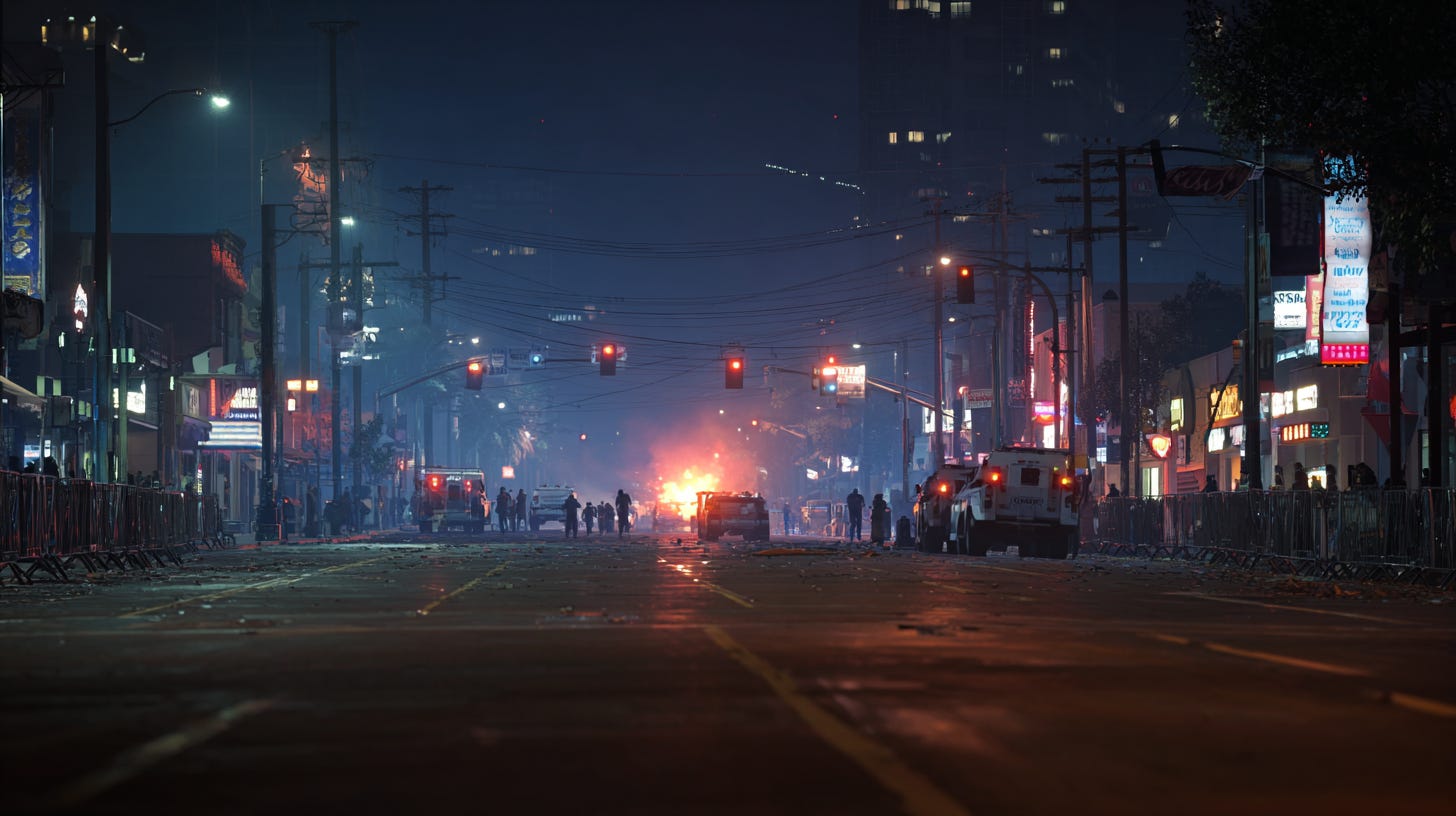Civil Unrest & Political Violence: The Reality We Must Face
Political violence in America isn’t hypothetical — it’s happening now. Here’s how to think about survival when unrest hits close to home.
We don’t need to imagine a future where political violence and unrest could strike the United States.
We’re already seeing the warning signs all around us.
National Guard troops are being deployed into cities as if protest itself is a threat.
Politicians and judges are being targeted.
Neighbors look at each other with suspicion.
The temperature is rising — and if history teaches us anything, it’s that societies don’t drift into unrest; they plunge into it suddenly, and often violently.
Preparedness in this context is not about paranoia. It’s about realism.
Lessons From History
When I read Scars of Independence: America’s Violent Birth by Holger Hoock, I was struck by how different the reality of the Revolution was from the stories we’re usually told.
It wasn’t noble speeches and grand battles alone — it was brutality, torture, neighbor against neighbor. A civil conflict fought in homes and villages as much as in open fields.
Then I turned to Selco Begovic’s SHTF Survival Stories: Memories from the Balkan War, which strips away any illusion about what collapse looks like.
Life didn’t unravel with fanfare — it fell apart into hunger, betrayal, and sudden violence.
What stuck with me most is how violence rarely came from strangers at the gates. It came from people you thought you knew.
The lesson is simple, and it should shake us awake: when order breaks down, violence becomes local.
The American Reality Today
Look around. We don’t have to wonder what unrest might look like — the outlines are already here.
Military presence in cities: National Guard deployments are becoming normalized.
Political violence: We’ve already seen public officials killed in their homes, with more hostility brewing.
Polarization: Communities are fractured, with fault lines running directly through neighborhoods.
If a wider conflict comes, it won’t resemble the Civil War of the 1860s with clear battle lines.
It will look more like the Revolution — chaotic, scattered, personal.
Not blue vs. gray or red vs. blue, but neighbor vs. neighbor.
A Survival Mindset
In this environment, survival does not mean “winning.” It means avoiding unnecessary risks and making choices that keep your family safe.
Here are the principles I live by and encourage you to adopt:
Awareness: Know what’s happening in your city, on your street. Pay attention to signs of rising tension.
Avoidance: The safest fight is the one you never step into. Don’t be drawn into confrontations.
Defense as a last resort: If violence finds you, your goal is to escape, protect, and endure — not to escalate.
Operational security (OPSEC): Keep your supplies, affiliations, and plans private. Don’t advertise what you have.
These aren’t just abstract ideas. They’re survival strategies proven over centuries of human conflict.
Practical Actions You Can Take Now
You don’t need to wait for unrest to start preparing. Here are steps you can put into motion immediately:
Family plan: Establish rally points and check-in procedures if communication goes down.
Routes: Identify alternate ways home, to work, or to safe locations. Avoid bottlenecks.
Home security: Harden your home with layered defenses — strong locks, lighting, and simple deterrents.
Stay informed: Monitor local news, community chatter, and if possible, radio frequencies and scanners.
Train: First aid & CPR, situational awareness, and de-escalation skills are just as important as gear.
Preparedness here is about resilience and flexibility — not firepower or bravado.
Survival Is Not Heroics
It’s tempting to imagine unrest in cinematic terms: dramatic fights, clear villains, decisive victories.
The truth is far uglier.
Civil unrest is messy, unpredictable, and unfair.
The people who survive aren’t the ones looking for a fight — they’re the ones who know when to avoid one.
Your job isn’t to fight.
Your job is to endure, protect your family, and live to see what comes next.
In the next post, we’ll start digging into the practical pillars of preparedness — beginning with the first building block of resilience: Fire.
Subscribe and Stay Ready
This post is part of my series on Urban Preparedness in Uncertain Times. Each article builds on the last to give you a clear, practical plan for protecting your family in a failing system.
👉 Subscribe now to Pathfinder Chronicles and don’t miss the next post: Fire — the first building block of resilience.



